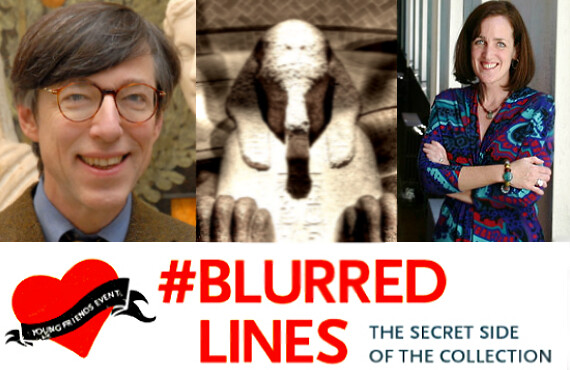Penn Museum Explores 'Blurred Lines' of History
Steamy stories have been shared throughout history.
As witnesses to history, many of the artifacts showcased in the permanent collection at the University of Pennsylvania Museum of Archaeology and Anthropology are just waiting to have their romantic tales revealed.
Objects depicting racy material, from shapely tattooed figurines with jewelry highlighting erogenous zones to oversized phallic symbols, provide Egyptologist and Penn alumna Jennifer Wegner, with new ways to share her research and engage with today’s audiences.
“We have plenty of examples of Egyptian artifacts at the Penn Museum that may look overtly sexual or even pornographic to our modern, western eyes,” Wegner says. “But, these things may not have been quite so shocking to the ancient Egyptians.”
As the associate curator of the Penn Museum Egyptian Section and an adjunct assistant professor of Near Eastern languages and civilizations in the School of Arts and Sciences, Wegner ties today’s popular culture with ancient history to deliver unforgettable presentations that sometimes include a few blush-worthy anecdotes.
But, says Wagner, things aren’t always as they seem. There are “blurred lines” between what today’s museum goers think they’re seeing, and what these artifacts actually meant to the Egyptians.
“We may think of these objects or images as delightfully ‘naughty,’ but, for the ancient Egyptians, they served a religious, magical or practical purpose, rather than objects that are meant purely to titillate,” she explains.
Wegner adds that she loves it when people make a human connection with the past and realize they are not so different from those who lived thousands of years ago.
“We still have many of the same human concerns as people did along the banks of the Nile 4,000 years ago,” she says. “We still appreciate beauty in a variety of forms, we still want to fall in love, we still enjoy intimacy, break-ups still make us cry, we worry about fertility and having babies — all the same things that many of these so-called ‘sexy’ or ‘naughty’ objects address.”
C. Brian Rose, the curator-in-charge of the Penn Museum’s Mediterranean Section, is the James B. Pritchard Professor of Archaeology in the Department of Classical Studies at SAS. Since arriving at Penn in 2005, in addition to developing public outreach programs that highlight the looting of art and antiquities during wartime and cultural-heritage preservation, he has explored themes of romance, deception, jealousy and unbridled passion in archeology.
Speaking to the Young Friends of the Penn Museum in 2013, Rose lectured on “50 Shades of Pompeii,” recalling casual romantic trysts between forbidden lovers in the ancient city.
Rose says the audience is receptive to the topic.
"Many of these erotic objects have remained in our storerooms for decades, so this is our best chance to get them noticed,” Rose says. “No one appreciates such lively artifacts more than the museum's Young Friends."
These sorts of delicious, eyebrow-raising narratives have, in fact, become an obsession of sorts for the Young Friends of the Penn Museum’s annual Valentine’s Day event that unearths sexually explicit chronicles of the ancient world.
Wegner’s Valentine’s Day lectures have included “Cougars, Playas and Baby Mama Drama in the Ancient World,” “Love Hurts: Salacious Tales of Romance in the Ancient World” and “The Greatest Heartbreaks of Ancient Times,” during which she discussed the sizzling scandals of the time, how they pair up with today’s gossip columns and how “what happens in ancient Egypt, stays in ancient Egypt.”
This year, Wegner and Rose will team up to explore “Blurred Lines: The Secret Side of the Collections,” Thursday, Feb. 20, at 6 p.m. (The event has been rescheduled from its original date of Feb. 13, due to weather concerns.)








